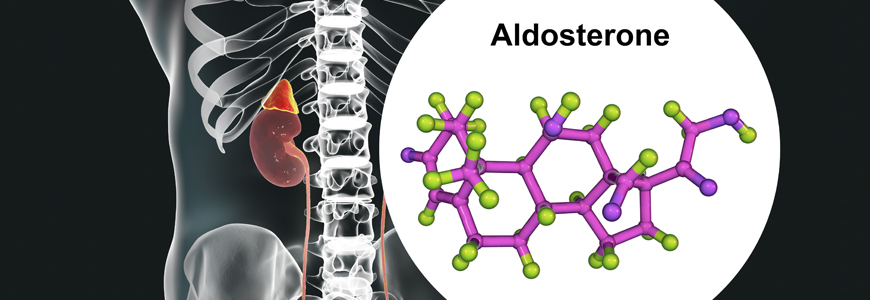A Duke endocrinologist is emphasizing the early, accurate diagnosis of primary hyperaldosteronism—a condition considered significantly underdiagnosed—by helping referring physicians identify patients who should be screened.
Primary hyperaldosteronism is an under diagnosed cause of secondary hypertension, says Ali Qamar, MD, who is building a subspecialty within the Duke Division of Endocrinology, Metabolism and Nutrition to identify and treat the condition.
Qamar plans to collaborate with regional physicians to share guidelines for hyperaldosteronism screening and diagnosis. Patients demonstrating one or more of the following characteristics should be considered for a screening blood test for primary hyperaldosteronism (plasma aldosterone and plasma renin activity):
- Blood pressure greater than 150/100 mm Hg on three occasions
- Blood pressure greater than 140/90 mm Hg while taking three or more medications
- Controlled blood pressure requiring four or more medications
- Spontaneous or drug-induced hypokalemia
- Hypertension with an adrenal mass
- Hypertension with sleep apnea
- Hypertension in conjunction with a potential family history of primary aldosteronism
Patients who test positive during screening should be referred to an endocrinologist for confirmatory testing and lateralization studies, Qamar says.
Based on older diagnostic criteria, hyperaldosteronism was not normally considered unless a patient presented with hypokalemia. But only 9% to 37% of cases involve hypokalemia, Qamar cautions. “Low potassium is not required for diagnosis of hyperaldosteronism,” Qamar adds. “Approximately 5% to 10% of patients with hypertension have the condition. The incidence is higher among patients with resistant hypertension or obstructive sleep apnea.”
A major limiting factor in the prompt diagnosis of primary hyperaldosteronism has been the general reluctance to order blood tests for hyperaldosteronism because many medications interfere with the test results.
“We want to encourage our colleagues to reach out to us to guide care for patients who may have the condition so we can provide comprehensive endocrine support, which includes tests, imaging and lateralization procedures.” Qamar says.
Unilateral resection of the adrenal gland may be required in surgical candidates with unilateral aldosterone production, but the mineralocorticoid receptor antagonists (spironolactone and eplerenone) are effective for patients who have bilateral disease or if they are not surgical candidates. When adrenal gland surgery is recommended, Qamar says outcomes are better in centers that perform higher volumes of the procedure.
“Hypertension makes this an easily identifiable condition,” Qamar says. “My goal is to identify these patients and, when surgery is not an option, optimize medical management as untreated hyperaldosteronism has significant cardiovascular morbidity.”
